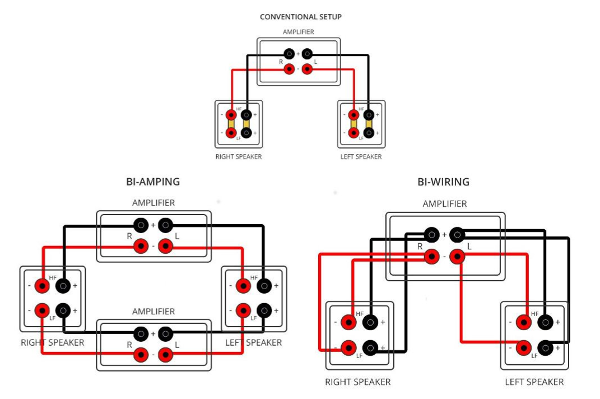If you know how to draw circuit diagrams, I encourage you to draw one of a bi-wiring setup, vs. a single set of wires bridges at the speaker terminals.
These circuit diagrams are identical. There's literally no difference at all between a bi-wiring setup with bridges on and bridges off. The only potential difference between a bi-wiring setup and regular wiring is that you physically have more wire running between your amp and speakers, so if you're listening at high volume and delivering a lot of current, you might see a small advantage, but no different than stepping up to a heavier gauge wire.
Bi-amping is a different story. Most modern receivers and integrated amplifiers have a "Zone 2" that can be set as a second amp for bi-amping. I have a relatively small and lightweight amp that delivers 60wpc - not really enough to drive my power-hungry floor standing speakers, but the amp has a Zone 2 which allows me to bi-amp and deliver 120wpc to my speakers.
































































